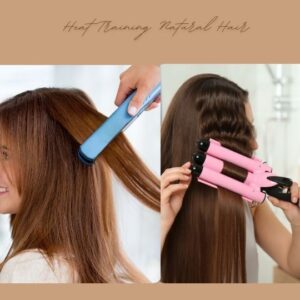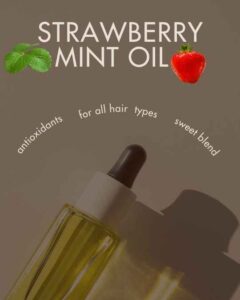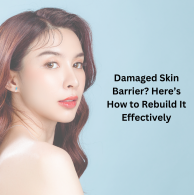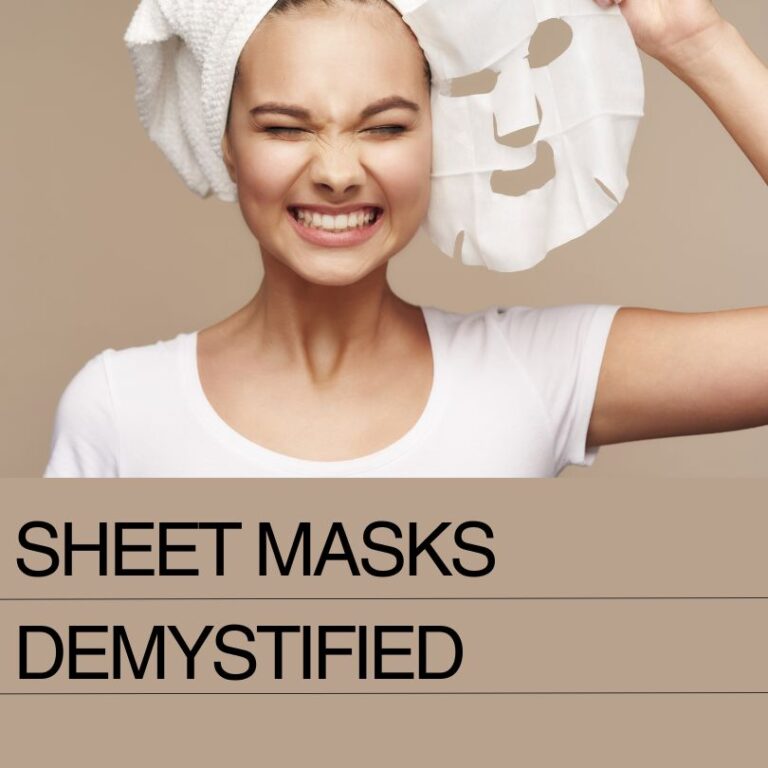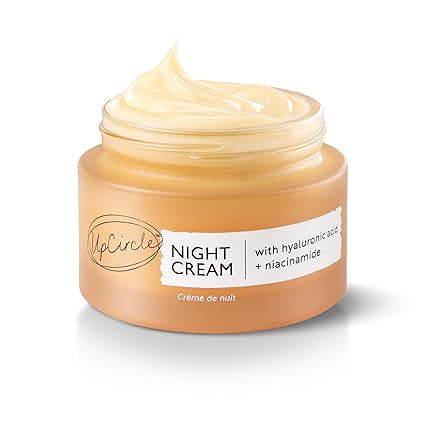Hair mask is good or hot oil treatment is right choice for you. Which is better, a hair mask or hot oil treatment?
Hair masks are stronger than usual conditioners as they offer more intensive nourishment and moisturizing. This is especially great for dry, brittle or damaged hair.
Hot oil treatments are not only able to nourish the scalp, providing it with an opportunity for a more healthy growth of hair but also may prevent such issues as dandruff and dry scalp.
Other treatments can simply be a relaxing self-care activity providing an escape from everyday hustle and bustles where they pamper themselves These treats can also vary to suit different hair types and issues, necessitating variation in the ingredients used for fulfillment of diverse needs. Let’s see what is the right choice for your hair and which types of hair is needed for this treatment.
Table of Contents
ToggleHair Mask
Hair can be damaged by regular styling, heat treatments hair coloring and through the environment. Hair masks can counter this damage as they repair it, reducing breakage and split ends.
They promote smoothness on the hair cuticle, preventing it from being frizzy and making handling of hairs easier Hair masks repay by improving hair texture to make curly or coarse locks smoother which is more defined Over time Haired become dull looking. Masks can revive the shine and sheen of hair.
A hair mask is a deep conditioning therapy that usually has nutritious ingredients, such as natural oils, vitamins and proteins. The product is left in the hair for an interval (15- 30 minutes) and then washed out.
Benefits:
Deeply moisturizes and conditions hair. aids in the repair of damaged hairs, minimizing breakages and split ends. Improves softness shine radiance to your coif; excellent for dry brittle or over processed tresses .
Best for:
Firstly, hair masks are very helpful for dry or frizzy and damaged locks. They are also fantastic for curly hair that demands extra hydration.
SEE ONLINE: amika soulfood nourishing mask
Oil Treatment
An oil treatment includes using the natural oils, such as coconut, olive or argan oil on your hair directly. It can be left on for 15 minutes or overnight before rinsing.
Nourishes the scalp and aids in hair growth .Shines and smooths the locks. Calms frizzies and flyaways’ flakiness away Calms dry, itchy head problems. Normal to dry hair types. It works well for those with a dry scalp or people looking to grow more hair.
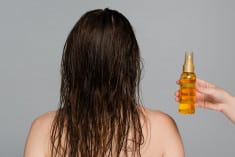
vista .com
Hot Oil Treatment
Oils can penetrate the hair shaft, strengthening the hair from within and reducing the likelihood of breakage. Oils naturally add shine to the hair, giving it a healthy and vibrant appearance. Hot oil treatments can help lock in moisture, especially beneficial for dry or porous hair types. These treatments can make hair smoother and easier to detangle and style. Similar to an oil treatment, but the oil is gently heated before application. The warmth helps the oil penetrate more deeply into the hair shaft.
Benefits:
Enhances the nourishing effects of the oil. Improves blood circulation in the scalp, promoting healthier hair growth. Deeply conditions the hair, making it softer and shinier. Can help in repairing hair damage.
Best for:
Dry, damaged, or coarse hair. It’s also beneficial for those with a dry or flaky scalp.
Which is Better?
If your primary concern is deep conditioning and repairing damage, a hair mask might be better. you’re focused on scalp health, nourishment, and promoting hair growth, oil treatments or hot oil treatments could be more beneficial. Consider your hair type (dry, oily, normal, curly, etc.). Think about your main hair concerns (damage, frizz, scalp health, etc.). Factor in convenience and time (oil treatments might require overnight application, while masks are shorter).
WHEN ARE THEY APPLIED?
The application timing and method for hair masks and hot oil treatments vary based on the specific product and treatment type. Here’s a general guideline on when and how they are typically applied:
Hair Masks
- After shampooing your hair. It’s best to apply a hair mask to clean, towel-dried hair.
- Hair masks are usually not meant to be used every day; once a week or a few times a month is typical, depending on your hair’s needs.
How to Apply:
Apply the mask evenly throughout your hair, from mid-length to the ends. Avoid applying directly to the roots, especially if you have oily scalp. Leave the mask on for the recommended time, usually between 15 to 30 minutes. Rinse out thoroughly with water.
SEE ONLINE: OKAY 100% COCONUT OIL for HAIR and SKIN in JAR
Hot Oil Treatments
- Typically, before shampooing. The treatment is meant to be a pre-shampoo deep conditioning treatment.
- It’s often recommended to do this treatment once a week or as needed.
How to Apply:
Heat the oil until warm (not hot) and apply it to your hair and scalp. Massage gently. Leave the oil in your hair for at least 30 minutes. You can also wrap your hair in a warm towel to increase penetration. Shampoo and condition your hair as usual to remove the oil.
Both hair masks and hot oil treatments are best applied when you have time to let them sit and penetrate the hair, making them popular choices for at-home spa days or during longer self-care routines. Remember, the specific instructions can vary by product, so always check the directions on the packaging for the best results.
SEE ONLINE: Difeel Peppermint Hot Oil Treatment
CAN I USE A MASK AND HAIR OILS AT THE SAME TIME?
Using a hair mask and hair oils together can be done, but it’s important to consider how you layer these products to get the most benefit without overburdening your hair. Here’s a guideline on how to effectively combine these treatments:
Option 1: Sequential Application
Oil First, Then Mask:
Start with a hot oil treatment or regular oil application. This step helps to nourish the scalp and hair, and the oil can penetrate deeply into the hair shaft. After the oil treatment, wash your hair with shampoo to remove excess oil. Apply a hair mask post-shampoo. Since the hair is clean, the mask can work effectively on the hair shaft, providing deep conditioning. This method is effective if your hair needs intense nourishment and repair.

vista.com
Option 2: Mixing Oil with Mask
Combine Oil and Mask:
You can mix a small amount of hair oil into your hair mask before applying it. This enhances the mask’s conditioning properties. Apply the mixture to your hair, leave it for the recommended time, and then rinse it out. This method is suitable if you’re looking for an extra boost of nourishment and shine.
Option 3: Oil as a Leave-In After Mask
Mask First, Then Oil:
Use the hair mask first on clean, damp hair. Rinse it out after the recommended time. Once your hair is dry or slightly damp, apply a small amount of hair oil to the ends or any particularly dry or frizzy areas. This method works well if you’re looking to add shine and tame frizz after deep conditioning.
Important Considerations:
If you have fine or easily greasy hair, be cautious with the amount of oil you use to avoid making your hair look oily. Use high-quality oils and masks suited to your hair type for the best results. Overuse of products, especially oils, can lead to build-up. Monitor how your hair responds and adjust the frequency accordingly. Each hair type and condition may respond differently, so it might take some experimentation to find the best approach for your specific hair needs.
The suitability of hair masks and hot oil treatments
The suitability of hair masks and hot oil treatments largely depends on your hair type and specific hair concerns. Here’s a general guideline to help you decide which treatment might be more beneficial for different hair types:
Hair Masks
Hair masks are typically beneficial for:
- Dry or Damaged Hair: If your hair is dry, brittle, or damaged due to styling, coloring, or environmental factors, a hair mask can provide deep conditioning and restore moisture.
- Curly or Coarse Hair: Curly or naturally coarse hair often needs extra moisture and nourishment, which hair masks can provide. They can help define curls and reduce frizz.
- Thick Hair: Thick hair can handle richer, more intensive treatments like hair masks without being weighed down.
- Color-Treated Hair: Hair masks formulated for color-treated hair can help maintain color vibrancy and repair damage caused by dyes.
Hot Oil Treatments
Hot oil treatments are particularly beneficial for:
- Dry or Flaky Scalp: If you have issues with a dry or flaky scalp, hot oil treatments can help moisturize and soothe the scalp.
- Dull Hair: If your hair lacks shine and appears dull, hot oil treatments can add luster and vitality.
- Normal to Dry Hair Types: These hair types can benefit greatly from the nourishing properties of oils without getting overly greasy.
- Hair with Moderate Damage: If your hair is beginning to show signs of damage but is not excessively damaged, a hot oil treatment can help restore its health.
- Thin or Fine Hair: Use lightweight oils (like argan or almond oil) for hot oil treatments to avoid weighing down thin or fine hair.
General Tips
- Some individuals find that alternating between hair masks and hot oil treatments works best, addressing different needs at different times.
- You can customize treatments based on your hair’s needs, such as using a hydrating mask for dryness and a protein-rich mask for damage repair.
- Adjust the frequency of treatments based on how your hair responds. Over-treatment can lead to build-up or weigh hair down.
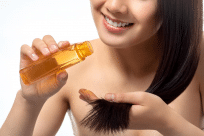
vista.com
READ MORE: Does flaxseed gel help hair growth?
Concluion:
To keep hair healthy and radiant,do hair mask treatment as well as hot oil treatments. Deep conditioning and repair hair masks are perfect for dry, damaged or curly hairs. Hot oil treatments feed the scalp and hair, providing additional strength and shine to dry or dull locks. These treatments can be tailored to different hair types and issues giving special care. Adding them to your hair care regimen can enhance the texture and manageability of your hair as well. This is not only about hair care practices but also self-care acts that provide relaxation and rejuvenation.


